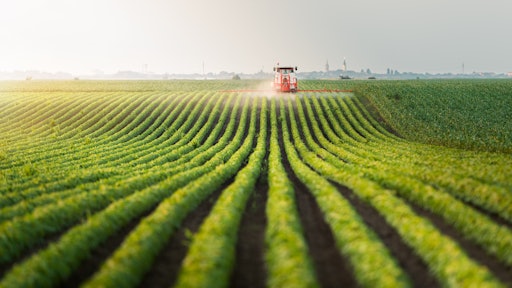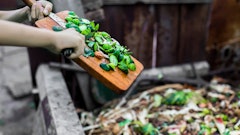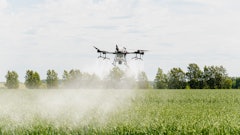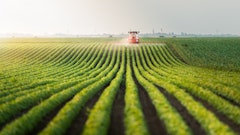
From the Midwest to the East Coast, wildfires are on the mind. The wildfire smoke from Quebec has impacted people from the United States to Spain to Portugal with poor air quality and hazy skies. Globally, though, wildfires are happening constantly – and are expected to worsen with El Niño. One aspect that’s been largely overlooked in discussions about wildfire smokes’ impact is its resounding effect on the world’s food supply.
Harmful to human health, wildfire smoke can also seriously affect crop health. Smoke and wildfire air particulates block crops’ access to the sun, which prevents plants from absorbing necessary nutrients. Less access to sunlight can lead to plants that are more susceptible to disease and diminished harvests. Wildfire smoke is detrimental to human and ecosystem health, as well as plants’ natural abilities to sequester carbon. The public health threat that it presents has far-reaching global implications that will continue to impact people around the planet in myriad ways.
No one is at greater risk from the multifaceted dangers of wildfires than the globe’s two billion smallholder farmers – who are collectively responsible for 75% of the global food supply. Leading producers of crops, including cocoa, fruits and nuts, coffee, organic crops and non-GMO soy and smallholder farmers live in locations where risk of wildfires has worsened dramatically as a result of climate change, including the Amazon.
Last year, wildfires in the Amazon rainforest – which is home to millions of smallholder farmers – broke records and instigated widespread devastation. This year, these records are expected to be shattered as a result of El Niño and increased deforestation, raising international concern over the health of a vital ecosystem and global food shortages.
For smallholder farmers, the threat of wildfires is double faceted: While wildfires themselves certainly hold the potential of putting farmland at risk of fire damage, there are the additional consequences of wildfire smoke on plants – including farm crops – when the air particulates from smoke prevent plants from absorbing vital nutrients from the sun.
Then, there is the impact of wildfire smoke on farmers’ own health; prolonged exposure to wildfire smoke can have severe health ramifications. For farmers, these health consequences can prevent them from tending to crops; for smallholders in particular, any time spent away from their crops as a result of poor health can have an enormous impact on their livelihood – a result of smaller harvests leading to slashed incomes.
Among the globe’s most vulnerable communities, many smallholder farmers are already under near-constant threat of being pushed or bought off their lands by developers: Smallholders are often in precarious financial situations. They rely on the income from their crops, however harvests are not always dependable – and are critically impacted as a result of climate catastrophes including wildfires, flooding, and heatwaves. Any additional financial blows to smallholder farmers’ annual income can further exacerbate the grave risk they face of being pushed or bought off their land.
Less land under management of smallholders and into the hands of developers puts the food security of the entire planet in jeopardy. In many cases it also means the loss of the extensive carbon stocks in vegetation and soils these smallholder farmers manage and protect. Carbon emissions from deforestation have doubled in the last 20 years and 80% of these emissions are related to agriculture. These additional emissions worsen the impacts of climate change, creating a vicious circle we need to interrupt.
The loss of soil and vegetation health tied to many non-regenerative agricultural practices – including overfarming and monocropping – increases the risk of dangerous wildfires. It’s well established how these farming practices deplete the soil of nutrients and leave behind unhealthy soil unsuitable for any agricultural purposes. While healthy soil can naturally stifle wildfire flames, the unhealthy soil left behind by overfarming and monocropping loses its ability to absorb carbon and prevents the natural quelling of wildfires.
Traditional practices like slash and burn (controlled-fire that leaves behind nutrient-rich ash) that have historically been used to restore soil health can become incredibly risky in areas with an onslaught of unhealthy soil.
Protecting smallholder farmers is a global imperative: When we lose the vegetation and healthy soils managed by smallholder farmers, we lose an overwhelming percentage of the world’s food supply, as well as the ability to draw down additional carbon from the atmosphere and the carbon stocks these crops contain.




























